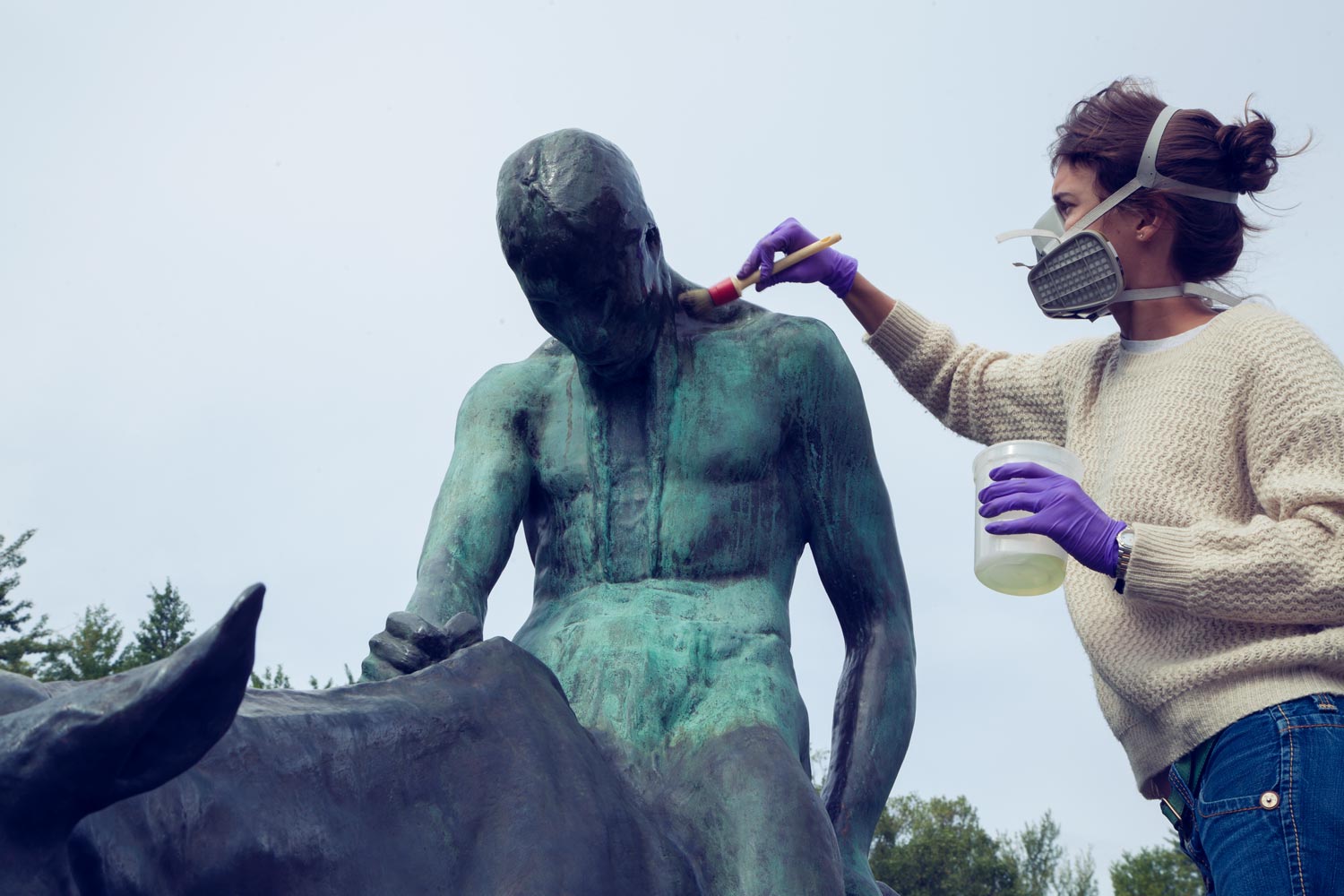A conservator in Colonial Williamsburg works to preserve paintings, weapons and many other artifacts from America’s earliest years.
A young photographer who documents painstaking restorations at the Virginia Museum of Fine Arts.
A consultant and veteran curator who, after a stint at the iconic Metropolitan Museum of Art, now helps other museums find their way.
All of them got their start as student interns at the Kluge-Ruhe Aboriginal Art Collection at the University of Virginia, home to the most comprehensive collection of Indigenous Australian art outside of Australia.
The museum, located on Pantops Mountain, regularly welcomes student interns who, as key members of a small team led by museum director Margo Smith, get hands-on experience planning, installing and presenting exhibitions; evaluating and conserving paintings and other artworks; and talking directly with guest artists and scholars.
Students can pursue a paid summer internship through the Mellon Indigenous Art Initiative; enroll in the University Museums Internship program, a two-semester course with the opportunity to intern at Kluge-Ruhe or The Fralin Museum of Art at UVA; or simply volunteer at the museum.
“Kluge-Ruhe is training the next generation of museum professionals, whose exposure to Indigenous Australian art and culture will prepare them to work in the globalized art world,” Smith said. “Because we are a small museum, interns are given greater responsibility and gain valuable firsthand experience working with collections and the public.”
See how those internships set these three women off on paths they are still following – and loving – today.
Kate Becker McEnroe – Assistant Conservator of Objects, Colonial Williamsburg
When art history student Kate McEnroe joined Kluge-Ruhe for the first of her two years as an intern, she knew little about museum careers.
By the time she left, she knew she wanted one.
“I was immediately exposed to what it took to run a museum, behind the scenes, and I had never really considered or known about all of those careers,” said McEnroe, who graduated in 2011. “It was such a neat experience, the first time I really felt like part of that museum world.”
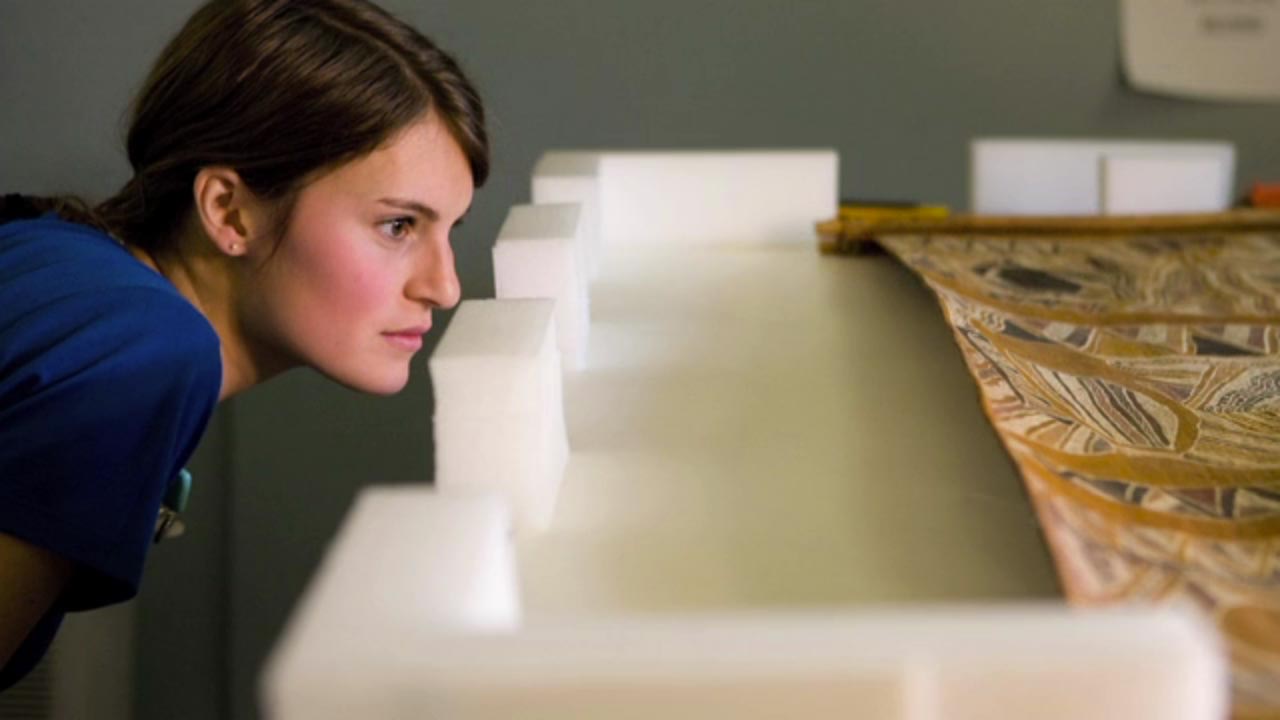
McEnroe examining a bark painting at the Kluge-Ruhe. (Contributed photo)
Now, McEnroe is an assistant conservator at Colonial Williamsburg, a living museum to early American history. She works with a huge range of objects, from 18th- and 19th-century silver and porcelain to modern-day folk art. Right now, she is focusing on an exhibit of Revolutionary War weapons, a form of art she did not necessarily anticipate ever working with.
“We are currently working on an exhibition about arms during the Revolutionary War, which has been really interesting,” said McEnroe, who also earned a graduate degree in conservation from University College London. “I love the conservation aspect, and I also love that the material then gets in front of the public. Everything we work on is exhibition-driven and that is very rewarding.”
She draws on what she learned at the Kluge-Ruhe nearly every day.
“It taught me all of the foundational elements of conservation, how to examine something and assess its condition,” said McEnroe, who also traveled to Australia after her time at Kluge-Ruhe.
She still remembers pouring over Aboriginal Australian paintings, or watching and helping as a conservator carefully restored a work of art to its original glory.
“I loved my time there, and Margo was a great mentor,” McEnroe said. “Kluge-Ruhe will always hold a special place in my heart.”
Lesley Schorpp Cannady – Founder and Principal, Thrive Fundraising & Strategy
Even in the midst of a thriving business career, Lesley Cannady missed being in a museum, missed the creativity energy and beauty she had found as a student intern and employee at Kluge-Ruhe. The 2001 anthropology graduate was one of the museum’s earliest interns, and put together her own exhibition at the museum, called “Chronicles of the Sea.”
“It was a really great learning experience, teaching all aspects of what it takes to put together an exhibition,” said Cannady, who applied for the internship while studying abroad in Australia. “I also met a lot of wonderful people in the field of Aboriginal art, which was very formative for me.”
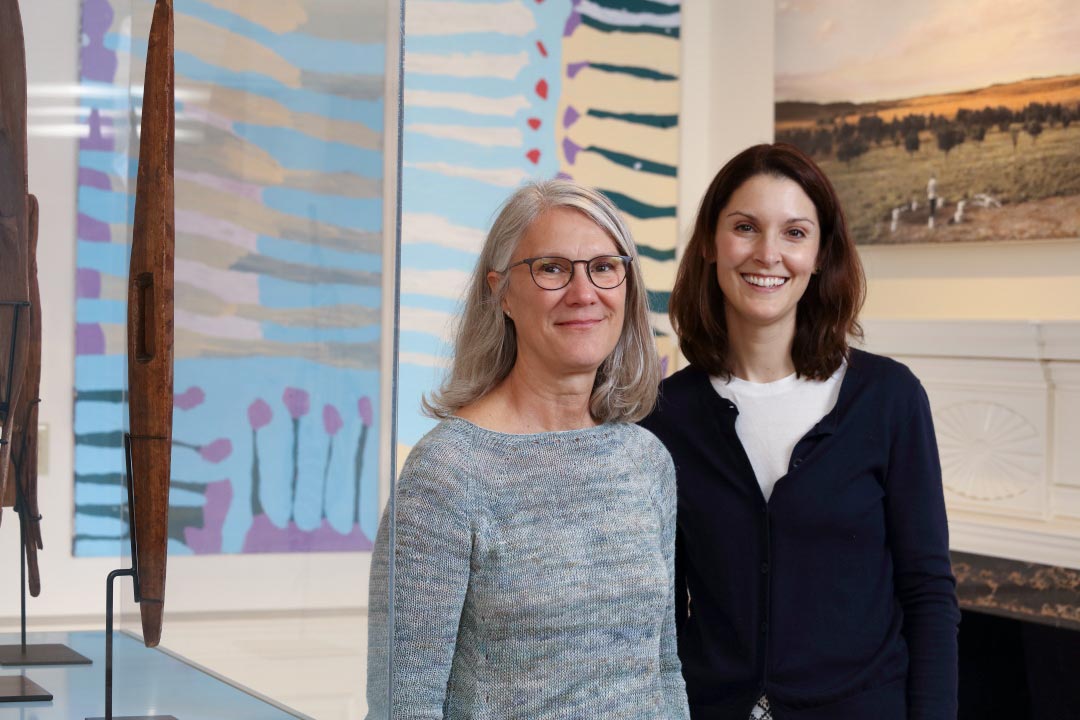
Cannady, right, with Kluge-Ruhe director Margo Smith. (Photo by Tom Cogill)
Though it would mean a pay cut, Cannady decided to leave the business world and return to museum work within a few years of graduating from UVA. She got a job in the curatorial department of the iconic Metropolitan Museum of Art and never looked back.
“I just missed being around art,” she said. “I knew I would be so much happier working at a museum.”
In the ensuing years, Cannady got a master’s degree in museum anthropology and found a way to blend her love of art with her business skills. She began working in fundraising and development at the Met and then founded her own consulting firm, Thrive Fundraising & Strategy, to help arts organizations and nonprofits raise and manage funds.
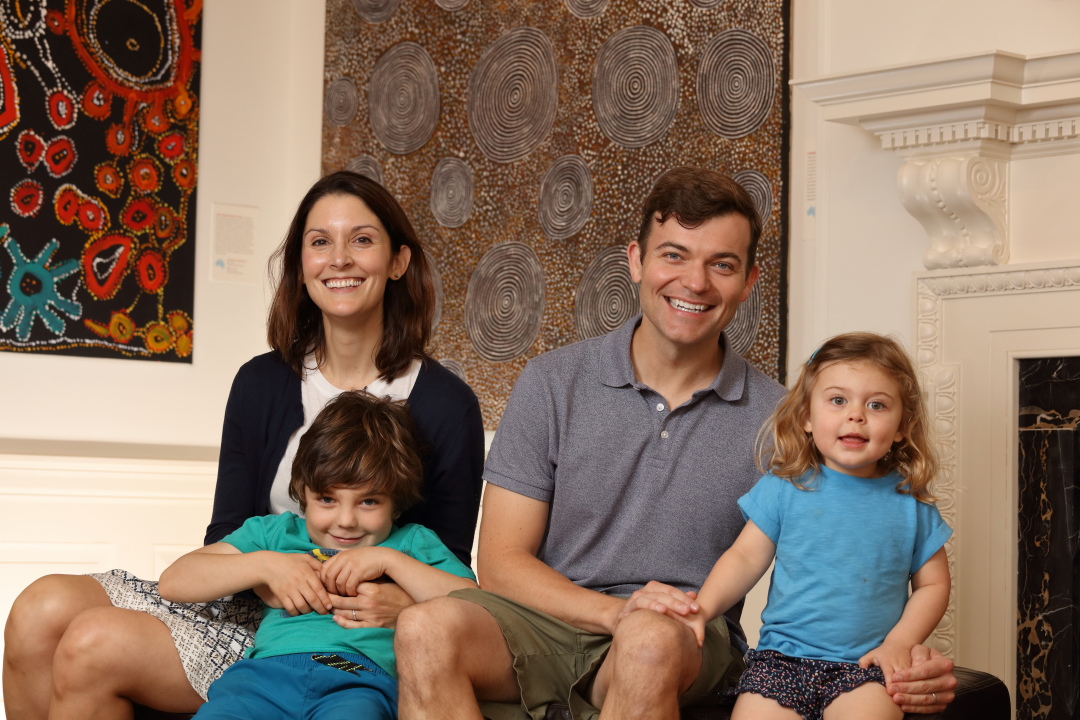
Cannaday with her husband Mike and their two children return often to visit Kluge-Ruhe. (Photo by Tom Cogill)
She also found her way back to Australia, where she worked at an art center in an Indigenous community for six months, and to Kluge-Ruhe, where she now serves as a member of the advisory council.
“I love being on the advisory board. It really is a dream come true,” Cannady said. “Margo has built the organization into a real force in the field of indigenous art and it is a role model for other institutions. It’s exciting to be a part of where it is going.”
Sydney Collins – Conservation Photographer, Virginia Museum of Fine Arts
Sydney Collins, a 2016 art history graduate, now works at the Virginia Museum of Fine Arts in Richmond, photographing each step of the conservation process for the museum’s vast collection of paintings and objects.
“I capture the process before, during and after,” Collins said. She also uses scientific imaging, such as ultraviolet or infrared imaging, to discern more about an artwork’s origins or any alterations it underwent.
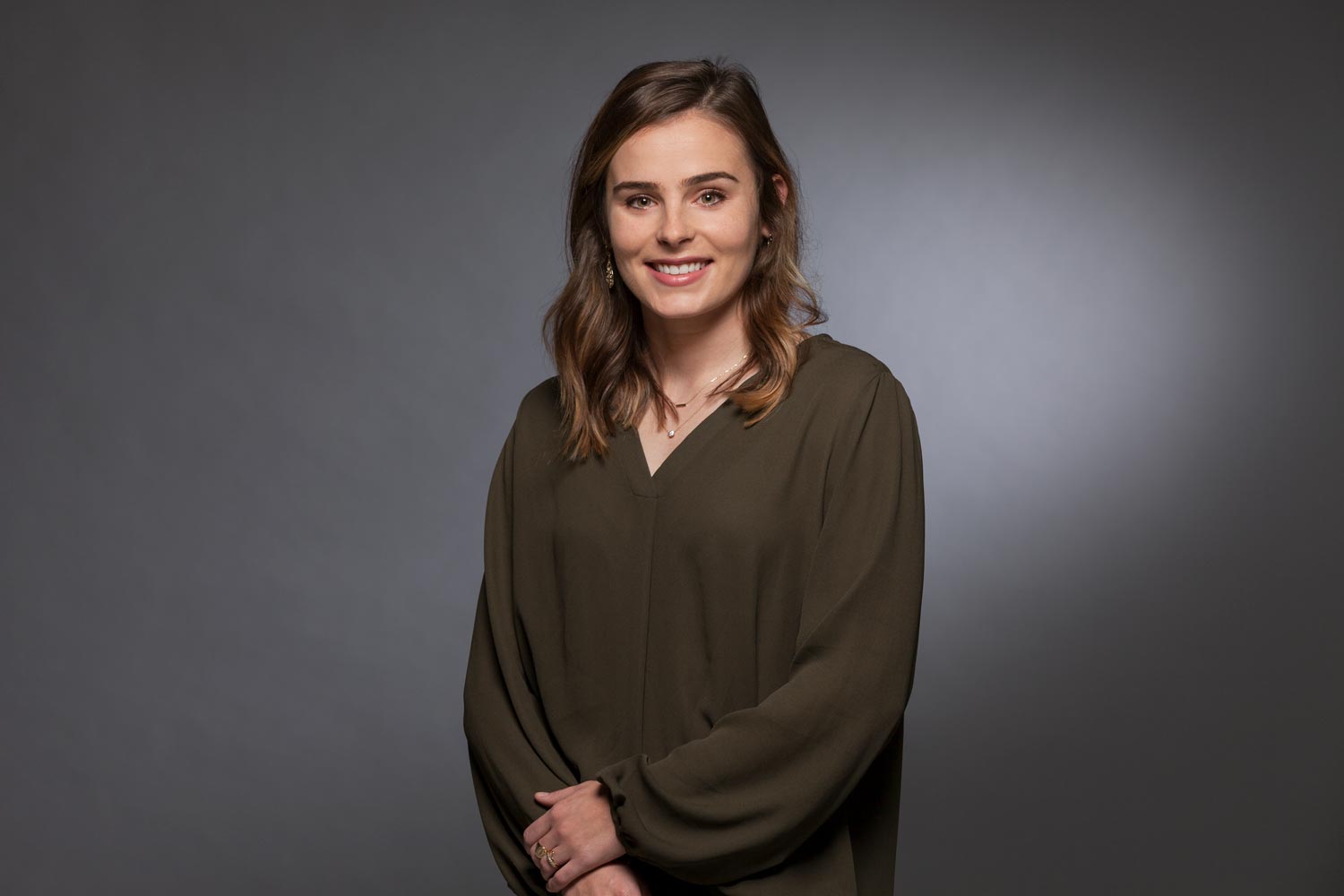
Sydney Collins is now a conservation photographer at the Virginia Museum of Fine Arts in Richmond. (Photo: David Stover © Virginia Museum of Fine Arts)
“Being a curious person, I love seeing what is beneath the surface of an artwork, and understanding how different mediums in the art interacted with variables in the environment,” Collins said.
Before working at the VMFA, Collins spent six months at the National Museum of the American Indian in Washington, D.C., where she helped build out a database of the museum’s collections.
In both roles, she has drawn on lessons learned at Kluge-Ruhe.
“I learned so much as an intern at the Kluge-Ruhe,” said Collins, who, like McEnroe and Cannady, traveled to Australia after her internship. “It was very collaborative and team-oriented, and I got to help out with so many different projects. The collaborative nature of that work has definitely helped me with my work now, because conservation is so collaborative and I work with so many different experts and departments.”
In a few years, Collins hopes to return to academia for graduate school, specializing in either conservation or scientific imaging.
“Working in museums and learning more about conservation has opened so many different avenues I was not aware of before,” she said.
Media Contact
Article Information
October 8, 2018
/content/kluge-ruhe-met-and-other-museums

